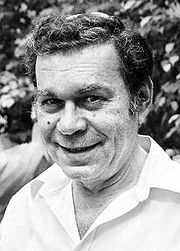Critical-Chain Approach
(→The Author) |
(→The Author) |
||
| Line 13: | Line 13: | ||
Eliyahu M. Goldratt (1947 – 29111) was born in Israel and over his life he worked as a lecturer, researcher, scientists, and a business leader. Goldratt completed a Master of Science and a Doctors degree in Philosophy both obtained at Bar-Ilan University in Israel <ref> Van Vliet, V.(2011) "Eliyahu Goldratt.", Retrieved on 11 September 2016 from http://www.toolshero.com/toolsheroes/eliyahu-goldratt/</ref>. | Eliyahu M. Goldratt (1947 – 29111) was born in Israel and over his life he worked as a lecturer, researcher, scientists, and a business leader. Goldratt completed a Master of Science and a Doctors degree in Philosophy both obtained at Bar-Ilan University in Israel <ref> Van Vliet, V.(2011) "Eliyahu Goldratt.", Retrieved on 11 September 2016 from http://www.toolshero.com/toolsheroes/eliyahu-goldratt/</ref>. | ||
| − | He is known for developing the groundbreaking Theory of Constraints (TOC), which he introduced in his book “Critical Chain” in 1997. The book reveals the reasons for why projects are unable to finish on time or within budget. In response to that, the TOC method was introduced | + | He is known for developing the groundbreaking Theory of Constraints (TOC), which he introduced in his book “Critical Chain” in 1997. The book reveals the reasons for why projects are unable to finish on time or within budget. In response to that, the TOC method was introduced <ref> TOC Goldratt.(2011) "Biography of Dr. Eliyahu M. Goldratt.", Retrieved on 11 September 2016 from https://www.toc-goldratt.com/tocweekly/biography-of-dr-eliyahu-m-goldratt/<ref>. This method reengineers the project planning and management practices in order to eliminate issues and problems that lead to poor project results. In addition he is the innovator behind several TOC tools such as “the thinking process”, “drum-buffer-rope” and the “Critical Chain Project Management” (CCPM) <ref> Van Vliet, V.(2011) "Eliyahu Goldratt.", Retrieved on 11 September 2016 from http://www.toolshero.com/toolsheroes/eliyahu-goldratt/</ref>. |
===History=== | ===History=== | ||
Revision as of 12:22, 11 September 2016
Critical Chain Project Management (CCPM) is a methodology for planning, executing and managing projects. The focus is on the project schedule and to reduce project changes and cost overruns by taking into account resource allocations and time uncertainties of activities.
The method was developed by an Israeli physicist, Eliyahu M. Goldratt, who introduced it in his Theory of Constraint (TOC) book “Critical Chain” in1997, which later became the foundation of CCPM. It was developed to reengineer the project planning and management practices in order to eliminate common issues and problems that can lead to poor project results, such as increased cost, fewer deliverables than expected and frequently missed deadlines due to longer than expected durations of activities.
CCPM differs from other traditional project planning methods that have its origin in critical path and PERT algorithms in several ways. The emphasis is on resources available, flexible starting times, interim milestones in projects and the use of resource-, feeding- and project- buffers but not order of tasks and strict schedules. The CCPM attempts to level out the resources available where a switch between project tasks are often needed to make sure the project is on schedule.
The focus of this article is to introduce and explain the background and concept of the CCPM approach when planning and scheduling a project together with benefits and limitations of the method. Undesired effects of more traditional planning and scheduling methods will be discussed, followed by how to prevent these effects by using the CCPM approach.
Contents |
The Author and the history

The Author
Eliyahu M. Goldratt (1947 – 29111) was born in Israel and over his life he worked as a lecturer, researcher, scientists, and a business leader. Goldratt completed a Master of Science and a Doctors degree in Philosophy both obtained at Bar-Ilan University in Israel [1].
He is known for developing the groundbreaking Theory of Constraints (TOC), which he introduced in his book “Critical Chain” in 1997. The book reveals the reasons for why projects are unable to finish on time or within budget. In response to that, the TOC method was introduced Cite error: Closing </ref> missing for <ref> tag.
History
Traditional approaches
Theory of Constraints
The concept of Critical Chain Approach
Planning
Execution
Control
Benefits
Limitations
Conclusion
References
- ↑ Van Vliet, V.(2011) "Eliyahu Goldratt.", Retrieved on 11 September 2016 from http://www.toolshero.com/toolsheroes/eliyahu-goldratt/